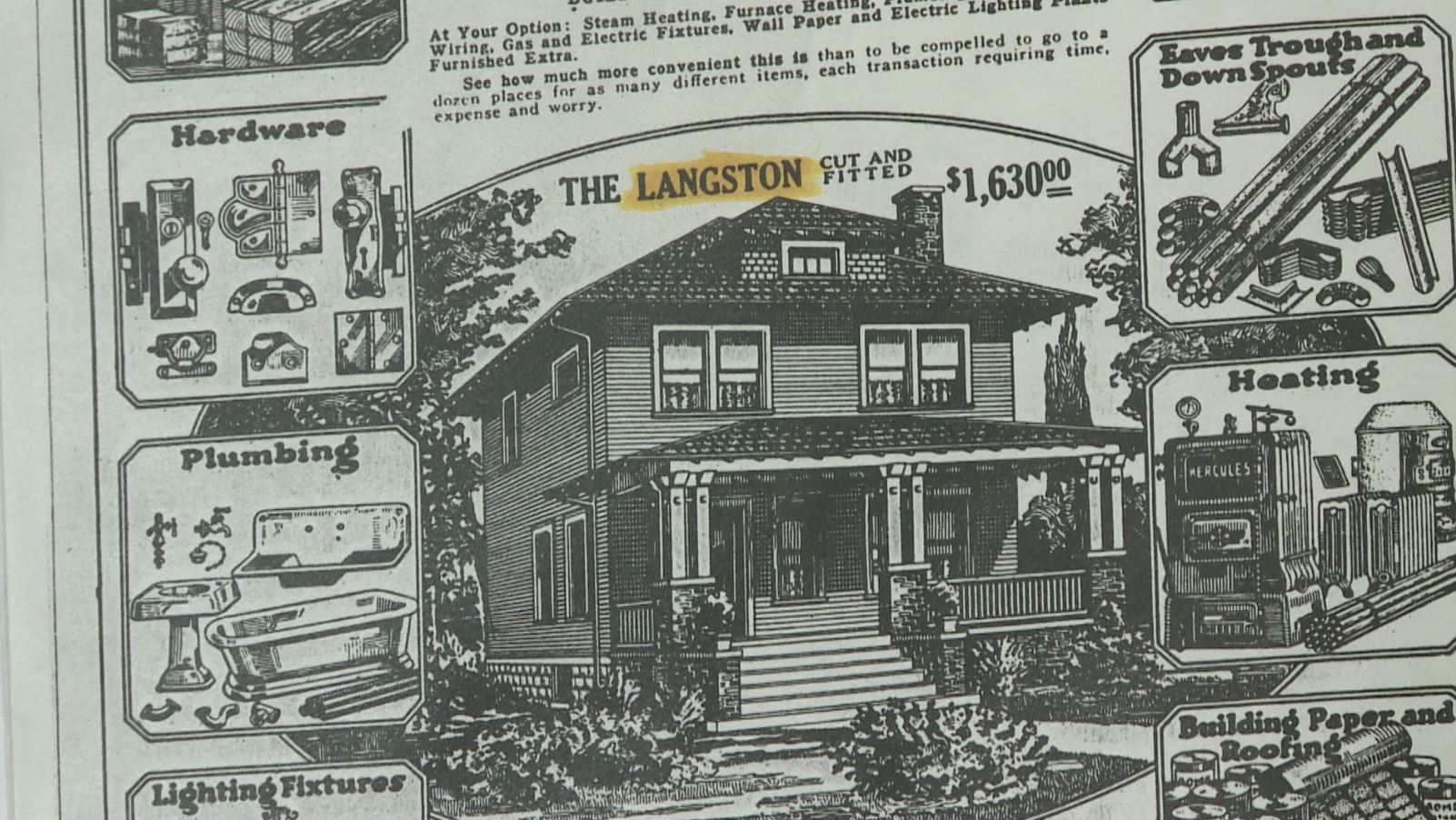In the early 1900s it was a radical idea: mail several thousand dollars to Sears Roebuck & Company, then wait for a train to deliver your new house in 12,000 pieces to be assembled. A nearly century-old neighborhood of railway-delivered Sears homes in Carlinville, Illinois, is a tourist attraction and a big part of the city’s history.
“It’s clean, got a good school system,” said longtime Carlinville resident Ben Strode. “It’s just a nice comfortable little town to live in.”
Strode and his wife Mary, both retired teachers, paid $6,500 for their Sears home in 1962.

“We’ve raised three children here,” said Strode. “Mary and I just finished our 63rd wedding anniversary yesterday.”
Like many of their neighbors, the Strodes take pride in their Sears house and its connection to Carlinville history.
“These are all Sears houses here and the next block is all Sears houses, and then you go that way three blocks,” Strode said, standing outside of his house. The Carlinville neighborhood is known as Standard Addition. Although Elgin, Illinois, has the highest number of Sears homes in the United States with more than 210, Carlinville is historically significant because it has the highest concentration of contiguous Sears homes in the nation, more than 150 in a 12-block neighborhood. It all started because of coal and oil.
In 1917, Standard Oil Company needed coal as part of the process for converting crude oil into gasoline, so the company purchased farmland that included the Carlinville Mine. To attract a reliable workforce including coal miners, Standard Oil made plans to build houses for prospective workers. As part of a $1 million order, Standard purchased more than 192 kit homes from Sears for workers in Carlinville, Wood River and Schoper. Of those houses, 156 kits went to Carlinville by train.
The kit homes ranged in cost from $1,100 to $4,600 and included as many as 12,000 pieces. Each kit included paint, varnish, roofing, windows, doors, hundreds of pounds of nails and a 75 page instruction book.
“It’s hard for the average person today to even fathom the idea of putting together 12,000 pieces of house,” said freelance writer Rosemary Thornton.
Over the decades, the story of Carlinville homes purchased from the Sears Roebuck catalogue, has become a favorite for writers and reporters. Thornton has a blog, www.searshomes.org, has written half a dozen books, and given hundreds of lectures on Sears homes.
“That’s one of the reasons they’re historically significant. They speak to a time in American history that is gone,” Thornton said.
That history is not lost on the Carlinville residents who own Sears homes, like Kerry Rinker.
“I am the owner of a Sears Warrenton,” said Rinker, identifying the specific model of her home. “The experts say the Warrenton is specific to Carlinville. There are no known other Warrentons outside of Carlinville.”
Tourists, many of them traveling Route 66 on motorcycles, often make a stop in Carlinville to visit Standard Addition to see the Sears homes.

“We have visitors from all over the world,” said Carlinville Mayor Deanna DeMuzio. “We have become a destination community where you can now see the beauty of what used to be our past history here with coal mining.”
For more information on Sears homes, www.searshomes.org.


